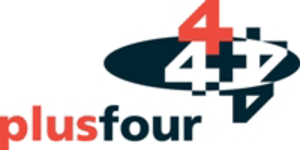Seeing differently
Why should we be looking at ‘attention’ more as a metric?
The number of ads we are subjected to may be infinite; our attention is very definitely finite. As consumers, we have only a certain amount of attention to spend on ads. More ads will not mean more attention; rather, being shown more ads in total probably means more ads being entirely avoided and ignored. Just because you can see something doesn’t mean that you will see something. People see what they want to see – and they very rarely want to see advertising. That’s why it is so important to develop creative work that is interesting, funny or beautiful to ‘earn’ people’s attention.
What is the background to the Mirriad integration?
Mirriad is a fascinating British success story. It started life as a special-effects company, and won an Oscar for its work on Black Swan, but it then chose to apply its technology to brand insertions in films and TV programmes. It regularly changes the brand of a bottle of beer in a scene or swaps a Ford for a Volkswagen in a TV programme. When we approached Mirriad asking to swap the point-of-sale (POS) materials inside a Tesco store, they seemed a little crestfallen: ‘is that all you want?’ The company’s technology can do so much more, but what seems simple to them is impossible for the rest of us.
Tesco uses the technology we have developed to test and optimise the volume of POS in store and then refine the creative designs of its POS materials.
How do you see the technology being applied beyond POS signs?
The same approach has been adopted by Route, the body that creates the ‘attention currency’ for out-of-home (OOH) advertising in the UK. We are currently conducting a project for it to understand the relative impact of static and digital OOH frames, so that buyers and sellers can be confident about the price differences between static and digital. We have adopted a similar approach to pre-test creative work for OOH, which is terribly under-researched. Finally, we have started to use the same approach to evaluate the attentional impact of product placement in TV shows.
Are attitudes changing in the media industry towards how effectiveness is measured?
The best marketers are using slightly more sophisticated and realistic models of how advertising is supposed to work, and therefore measuring its effectiveness better. Peter Field and Les Binet have been leading the charge over here, and the good people at the Ehrenberg-Bass Institute have some smart ideas too.
Our research supports their overall theories in quite an interesting way. We find that most people ignore most ads, and that when they do look at them, they glance at them rather than view them intensely. Yet the ads still work: the ads that people look at result in higher sales than the ones that people don’t look at.
How can this be? Well, it’s probable that most ads are working to drive salience and fresh overall memory structures, rather than rationally convince anyone of any specific USPs. USPs aren’t important because people don’t read ads sufficiently closely to understand them. This has big implications for developing advertising – raising salience and building fame as more important objectives than communicating picayune product points – but it also has big implications for measuring effectiveness. If you have a better, more realistic model of how your ads are meant to work, you can measure them against those criteria, rather than using an alternative, less realistic model as the yardstick.
There is increased application of neuroscience techniques in advertising. Does this help or hinder your approach?
A hindrance, mostly. Most ‘neuromarketing’ suffers from a Sorcerer’s Apprentice problem: the people conducting and interpreting the research don’t understand the tools they are using. Eye-tracking is relatively simple: people either looked here or they looked there. Even an idiot like me can understand that. But you need to have some proper theoretical training to understand the nuances of brainwaves and facial expressions, which is too often lacking among practitioners of neuromarketing. You get the best results when everyone – the researcher, the client, the decision-maker – understands the tools you are using and the implications of the results you obtain.
Are there any misconceptions of eye-tracking research?
Sometimes, people think that it’s a spy technology, but we could never use it like that. First, because it would break the MRS Code of Conduct, but second, because we can’t use the technology without people’s cooperation – respondents have to calibrate their eyes to the camera before they start a session, so we require their informed consent and participation.
What are your current priorities and what’s next?
Lumen’s main focus is on media valuation, especially for mobile advertising. We are building an ‘attention stack’ that will allow advertisers to buy ads programmatically based on their likelihood to be seen. We’ve been trialling this with desktop computers in the past few quarters and hope to extend it to mobile in the coming months.
This article was first published in the January 2020 issue of Impact.

We hope you enjoyed this article.
Research Live is published by MRS.
The Market Research Society (MRS) exists to promote and protect the research sector, showcasing how research delivers impact for businesses and government.
Members of MRS enjoy many benefits including tailoured policy guidance, discounts on training and conferences, and access to member-only content.
For example, there's an archive of winning case studies from over a decade of MRS Awards.
Find out more about the benefits of joining MRS here.











1 Comment
Steve Needel
6 years ago
Ads may also serve to reinforce existing purchasing behavior, not to just motivate a purchase. More people pay attention to a Ford ad than a Bentley ad because more people own Fords than Bentleys. Attending to a Ford ad reinforces your decision to have purchased a Ford. This is courtesy of Andrew Ehrenberg.
Like Reply Report